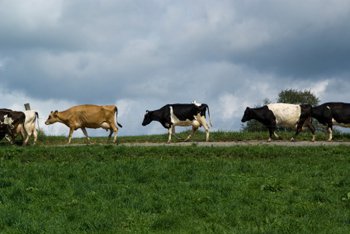
Poetry, Process Improvement, and Stepping Out of the Rut
Aaron Jones | 10 February 2012
Recently, I attended a meeting where a consultant was presenting his recommendations for a project that involved adding automation to an existing process.
One of the key points that jumped out at me was that his justification for this project was focused entirely on the elimination of people. The payback for this project was estimated to be about 3.6 years -- not unusual for European or Oriental businesses, but nearly double the norm for American firms.
While the consultant suggested that the project would probably go forward because it was a strategic initiative on the part of the customer, I could only think about a more than 100-year-old poem that was given to me long ago (but not shortly after it was written) that rather effectively explains why so many, seemingly promising, projects unexplainably fail to live up to expectations.
"...This forest path became a lane, that bent and turned and turned again;
This crooked lane became a road, Where many a poor horse with his load
Toiled on beneath the burning sun, And traveled some three miles in one..."
(Click to read the full poem)
The poem is a metaphor about how we sometimes think we are improving things, but are simply following in the footsteps of our predecessors, who, incidentally, established their paths early in history by following a course created by others.
Many times, I have seen significant, but idle, investments lost to outsourcing that were planned with one thing in mind -- not to change an inefficient and long travelled rut, but to make it faster, and less dependent on people, with automation.
The term "islands of automation" has its origin in this phenomenon. This seems to happen more frequently with project scenarios where only incremental changes are made due to the fear of disruption, insufficient funding, or many other reasons.
When new incremental improvements are finally approved, time has often passed to the point that previous work may no longer be the building block it was intended to be. But as I have said many times, if you don't have a master plan, and know where to take the first disabling bite, that elephant you are trying to eat can turn and stomp the heck out of you!
Outsourcing to offshore labor resources has become a relatively common fallback strategy, but it is, at best, a dangerous, short-term solution. Rarely do outsourced jobs ever return home, and often they drag desirable work with them. Still, the practice remains, especially when it's dealing with a labor force that is unwilling to reliably work in menial assignments that don't appear to directly contribute to the value stream. The alternative has been to throw money at the problem to get the people to stay in these unpopular, but seemingly essential positions. This practice, however, has raised costs, and salary expectations, fostering the temptation to send these jobs elsewhere.
Automation for the sake of eliminating the unpredictability and cost of human labor is frequently a "low hanging fruit" type of strategy, and often seen as a patriotic alternative of offshoring. But the process itself must be examined first. If we merely plan automation to eliminate the people -- without asking why the people are doing this in the first place -- we run the risk of merely "paving a cowpath". In my experience, projects rarely get funded on the simple basis of headcount reduction unless they include a demonstrable elimination of waste from the process.
The removal of waste is the sustaining factor in conducting a competitive business -- constantly working to discover and implement solutions that are more efficient, more responsive, and more agile than those being used by the people with whom you compete.
_________________________
1 The Calf-Path, a Poem by Sam Foss, Circa 1895
President & CEO of Bastian Solutions.
Comments
No comments have been posted to this Blog Post
Leave a Reply
Your email address will not be published.
Comment
Thank you for your comment.